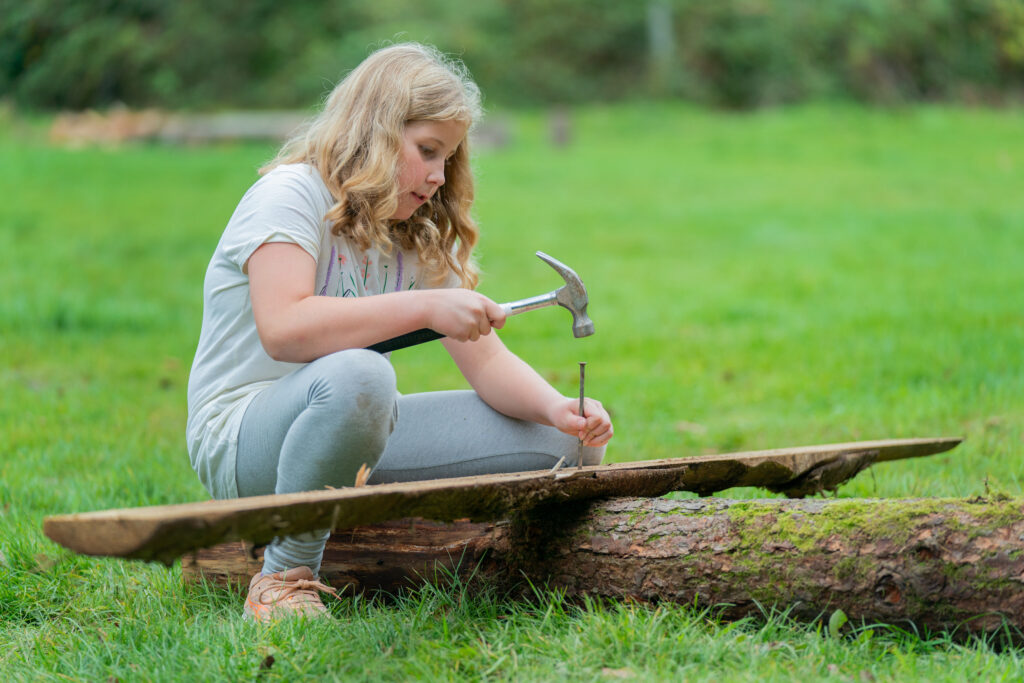Play
Play and risk
Children seek risk and uncertainty in their play. They are drawn to challenge, novelty, and the unexpected. Self-organised play helps children respond flexibly to difficult or changing situations.

The well-established body of evidence about children’s play shows that risk taking brings many benefits including:
- extending skills
- developing physical and emotional capacity
- experiencing the consequences of actions
Risk is an essential, natural and valuable part of children’s play.
Relevant policies
In General Comment no. 17, the United Nations Committee on the Rights of the Child (UNCRC) notes that uncertainty and challenge are two of the key characteristics of play. It stresses that:
‘While children must not be exposed to harm in the realization of their rights under article 31, some degree of risk and challenge is integral to play and recreational activities and is a necessary component of the benefits of these activities.’
The Welsh Government’s Play Policy recognises that children are born with a desire to seek out opportunities to take risks. It states that this is an essential part of play and learning. The statutory guidance Wales – a Play Friendly Country says a quality play environment must include graduated opportunities for children of all ages for risk taking, both physically and emotionally.
The Health and Safety Executive (HSE) encourages a balanced approach to managing risk in children’s play. The HSE says clearly that anyone planning or providing play opportunities should aim to weigh up the risks and benefits, rather than completely avoid risk. The HSE goes on to add that ‘Those providing play opportunities should focus on controlling the real risks, while securing or increasing the benefits – not on the paperwork’.
Risk assessments, introduced into the UK with the Health and Safety at Work Act 1974, are now commonplace. The Management of Health and Safety at Work regulations of 1992 and 1999 made risk assessments an explicit requirement for those managing play settings and spaces.
The role of adults
Children need and want some level of risk. Playing is a key way for children to experience and assess their own graduated risk-taking. However, children are in the process of developing a sense of judgement, so adults need to consider whether a risk is within a child’s current competency levels.
All children should have opportunities to experience or create uncertainty, unpredictability, and risk-taking as part of their play. However, this doesn’t mean putting children in danger of serious harm.
Risk and challenge are desirable, but inappropriate hazards are not. Adults therefore have a duty to ensure children’s safety. Accepting risk as an integral part of children’s play helps adults with risk assessment.
More information about risk assessments in children’s play can be found in the resources below.
Resources
Children’s Play and Leisure: promoting a balanced approach
This Health and Safety Executive (HSE) high-level statement promotes a balanced approach to managing risk in children’s play.
Managing Risk in Play Provision: Implementation guide
This Play Safety Forum guide is aimed at those responsible for managing play provision, and those involved in designing and maintaining play provision. It shows how play providers can develop a balanced approach to risk management, that considers the benefits as well as the risks.
Risk-Benefit Assessment Form
This is an easy-to-use tool to help play providers balance the benefits of an activity with any inherent risk. It takes the risks into account and also recognises the benefits of challenging play experiences to children and young people.
A worked example – applied to a tree swing – of the Risk-Benefit Assessment Form is also available by the Play Safety Forum.
Managing Risk in Play Provision: A position statement
This Play Safety Forum position statement explains the benefits of risk taking and clarifies some of the points that many play providers find difficult.

